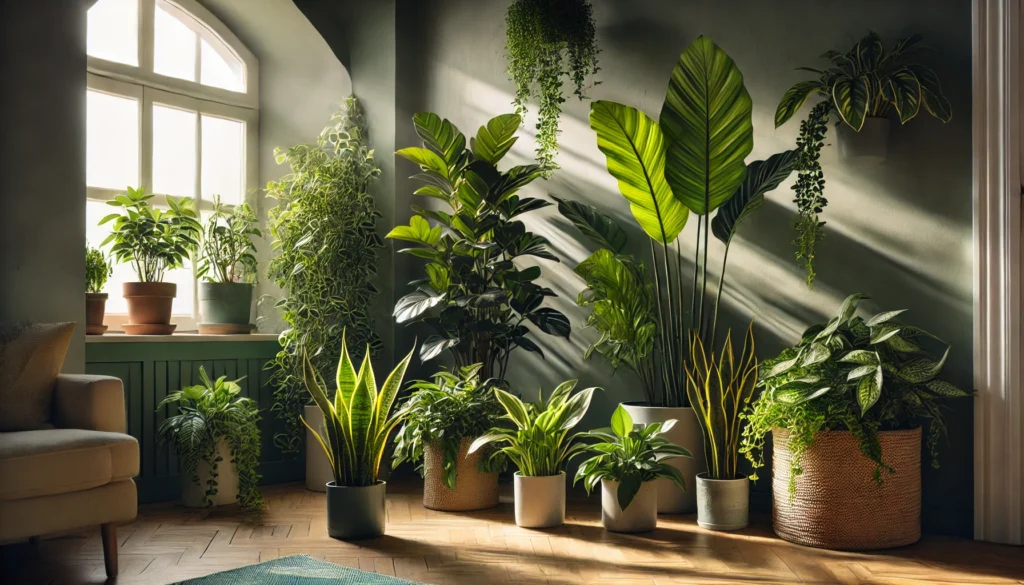
Best Shade-Tolerant Indoor Plant Varieties to Grow Indoors
Finding the perfect plant for a dimly lit room can feel like a challenge, but plenty of shade-tolerant indoor plant varieties thrive in low-light conditions. Whether you have a north-facing apartment, an office with limited sunlight, or simply want to brighten up a shadowy corner, the right plants can flourish with minimal natural light. In this guide, we’ll explore the best shade-loving houseplants that are not only easy to care for but also enhance your indoor space with lush greenery. Keep reading to discover the perfect plants for your low-light environment!
Table of Contents
ToggleWhat Makes a Plant Shade-Tolerant?
Not all plants need bright sunlight to thrive. Shade-tolerant indoor plant varieties have adapted to survive in low-light environments by developing unique characteristics that help them make the most of limited light. Here’s what sets them apart:
Larger Leaves for Maximum Light Absorption
Shade-loving plants often have broad, dark green leaves that capture and use light more efficiently. This adaptation helps them photosynthesize even in dim conditions.
Slower Growth Rate
Unlike sun-loving plants that grow rapidly, shade-tolerant varieties take their time. A slower growth rate means they require less energy and can sustain themselves with minimal light.
High Chlorophyll Content
These plants produce more chlorophyll, giving their leaves a deep green color. More chlorophyll means better light absorption, making them efficient at converting even small amounts of light into energy.
Adaptability to Artificial and Indirect Light
Shade-tolerant plants don’t just rely on natural light; they thrive under artificial lighting or indirect sunlight from windows, making them perfect for indoor spaces.
Efficient Water Use
Since low-light areas tend to have less evaporation, shade plants are adapted to use water efficiently, reducing the risk of overwatering and root rot.
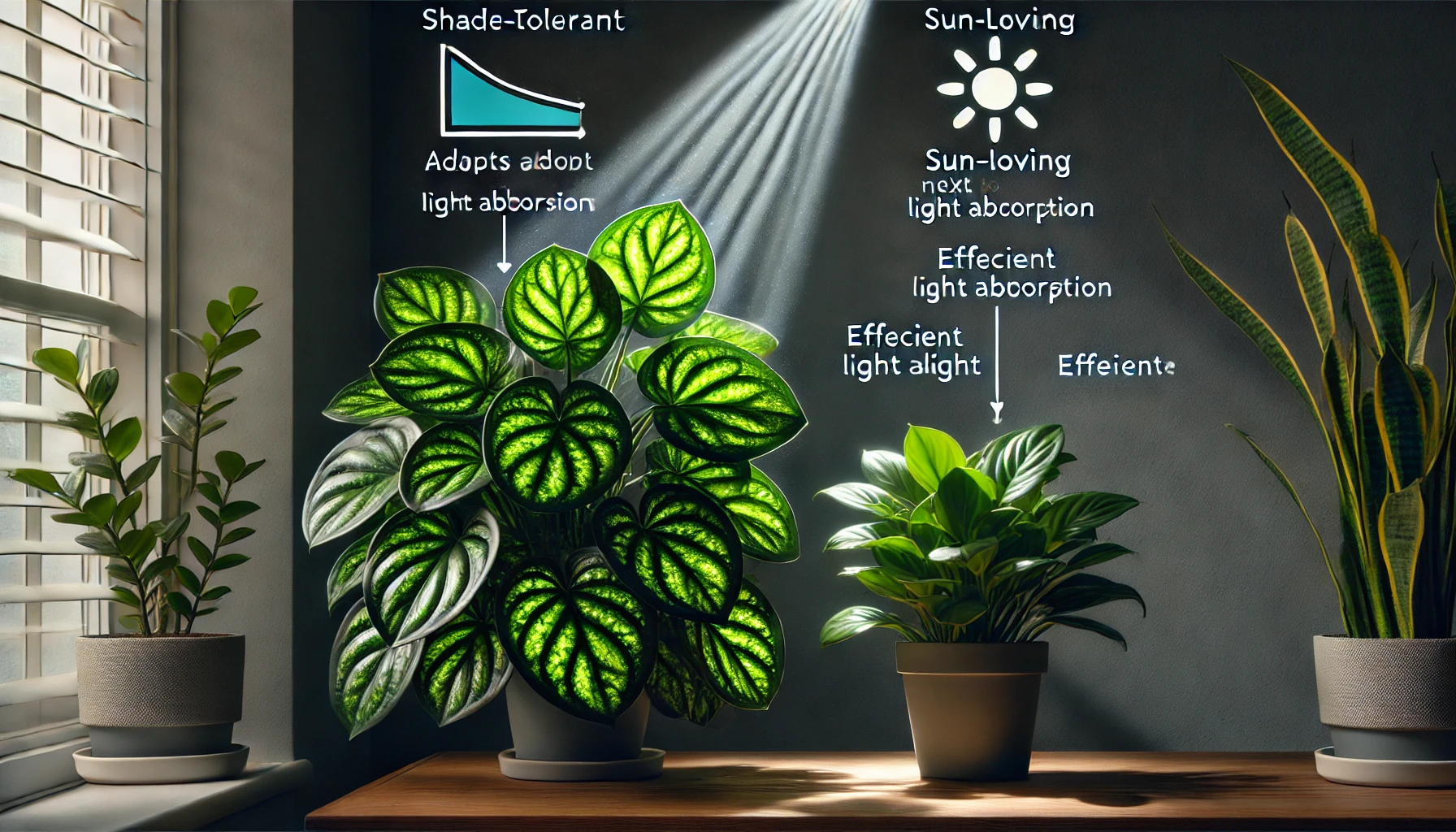
By understanding these traits, you can confidently choose shade-tolerant indoor plant varieties that will flourish in your home, even in darker corners.
Best Shade-Tolerant Indoor Plants
Not all indoor plants need bright sunlight to thrive. Many shade-tolerant indoor plant varieties can flourish in low-light spaces, making them perfect for homes, offices, and apartments with limited natural light. Below are some of the best options, categorized based on their ability to tolerate shade.
Low-Light Champion Plants (Thrive in Very Low Light)
These plants are the best choice for rooms with little to no direct sunlight.
- ZZ Plant (Zamioculcas zamiifolia)
- Why It’s Great: Nearly indestructible, ZZ plants can survive in very low light with minimal care.
- Care Tips: Water only when the soil is completely dry. Avoid overwatering to prevent root rot.
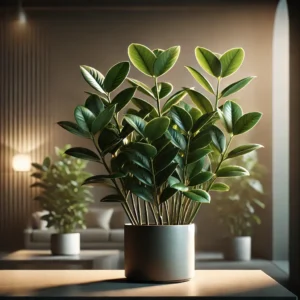
- Snake Plant (Sansevieria trifasciata)
- Why It’s Great: Known for its air-purifying qualities, this plant can tolerate neglect and dark corners.
- Care Tips: Let the soil dry between waterings; overwatering is the main cause of problems.
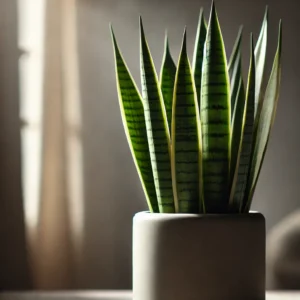
- Cast Iron Plant (Aspidistra elatior)
- Why It’s Great: True to its name, it withstands poor conditions, including low light, drought, and temperature fluctuations.
- Care Tips: Water moderately and use well-draining soil to prevent soggy roots.
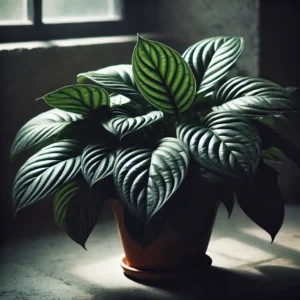
Moderate Shade-Tolerant Plants (Prefer Indirect or Filtered Light)
These plants do well in spaces with indirect sunlight, such as rooms with sheer curtains or spots far from windows.
- Peace Lily (Spathiphyllum)
- Why It’s Great: It produces elegant white flowers even in low-light conditions and improves indoor air quality.
- Care Tips: Keep the soil slightly moist and watch for drooping leaves as a sign it needs water.
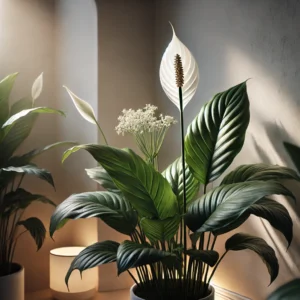
- Parlor Palm (Chamaedorea elegans)
- Why It’s Great: A slow-growing palm that brings a tropical feel to indoor spaces.
- Care Tips: Prefers evenly moist soil but tolerates some dryness. Avoid direct sun exposure.
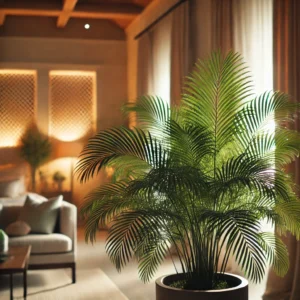
- Pothos (Epipremnum aureum)
- Why It’s Great: A fast-growing vine that thrives in dimly lit rooms and is nearly impossible to kill.
- Care Tips: Allow the top inch of soil to dry before watering. Trim vines to control growth.
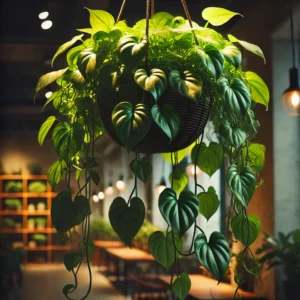
- Philodendron (Philodendron spp.)
- Why It’s Great: Adaptable and easy to care for, philodendrons thrive in indirect light.
- Care Tips: Water when the top layer of soil feels dry. Mist occasionally for humidity.
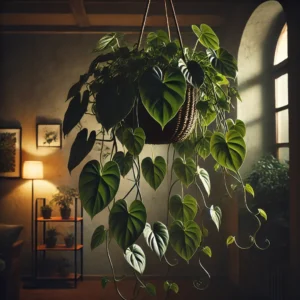
Unique and Decorative Shade-Tolerant Plants
These plants not only tolerate shade but also add a unique aesthetic touch to any indoor space.
- Chinese Evergreen (Aglaonema)
- Why It’s Great: Features striking variegated leaves and adapts well to different lighting conditions.
- Care Tips: Prefers consistently moist soil but can tolerate occasional dryness.

- Spider Plant (Chlorophytum comosum)
- Why It’s Great: A popular hanging plant with air-purifying benefits and easy care.
- Care Tips: Water regularly but allow the soil to dry out slightly between waterings.

- Heartleaf Fern (Hemionitis arifolia)
- Why It’s Great: Unique heart-shaped leaves make it a charming addition to any low-light space.
- Care Tips: Needs high humidity; mist regularly or place near a humidifier.
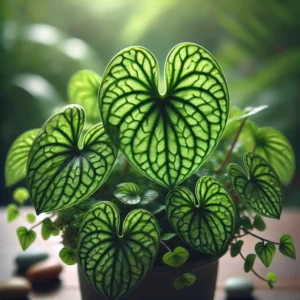
Choosing the right shade-tolerant indoor plant varieties ensures a thriving indoor garden, even in spaces with minimal sunlight. Whether you want a hardy ZZ plant, a lush pothos, or a flowering peace lily, these plants will brighten up your home with little maintenance. Pick the one that suits your space and enjoy a touch of greenery in any corner!
Essential Care Tips for Shade-Tolerant Indoor Plants
Growing shade-tolerant indoor plant varieties is easy, but they still need the right care to thrive. While these plants adapt well to low light, they have specific needs to stay healthy. Follow these essential tips to ensure they grow strong and beautiful.
Watering: Avoid Overwatering
- Low-light plants use less water because they photosynthesize more slowly.
- Check the soil before watering—water only when the top inch feels dry.
- Use pots with drainage holes to prevent root rot.
Humidity: Keep the Right Moisture Level
- Many shade-loving plants come from tropical environments and need higher humidity.
- Mist the leaves occasionally, especially during dry seasons.
- Place a tray with pebbles and water under the plant to maintain moisture.
Soil: Choose Well-Draining Mixes
- Use a light, well-draining potting mix to prevent soggy roots.
- Add perlite or sand to improve aeration and drainage.
- For ferns and tropical plants, mix in peat moss or coco coir for extra moisture retention.
Light: Indirect Light Works Best
- Even though these plants tolerate shade, they still need some light.
- Place them near a north-facing window or in a spot with filtered sunlight.
- If natural light is too low, use LED grow lights for a few hours daily.
Fertilization: Feed Sparingly
- Shade plants grow slower, so they don’t need frequent fertilization.
- Use a diluted liquid fertilizer once a month during spring and summer.
- Avoid over-fertilizing, as it can cause weak, leggy growth.
Cleaning: Keep Leaves Dust-Free
- Dust can block light absorption, affecting growth.
- Wipe leaves with a damp cloth every few weeks to keep them clean.
- For plants with delicate leaves, use a gentle mist or a soft brush.
Pest Prevention: Watch for Common Issues
- Low-light environments can attract pests like spider mites and fungus gnats.
- Check leaves regularly for signs of pests, such as webbing or yellow spots.
- Use neem oil or insecticidal soap if you notice an infestation.
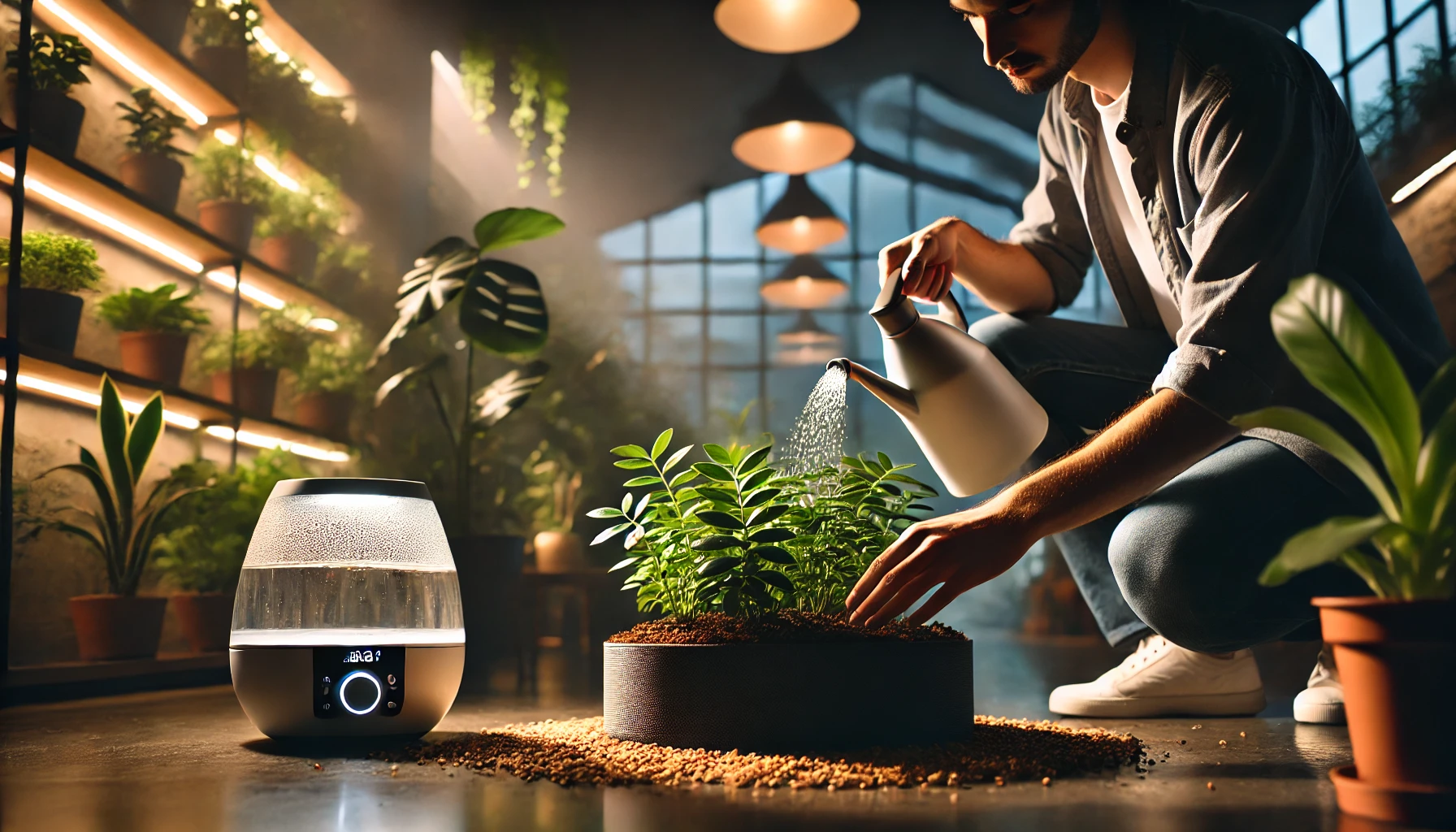
Caring for shade-tolerant indoor plant varieties is simple with the right approach. By controlling water, humidity, and light exposure, you’ll keep your plants happy and thriving. Follow these tips, and your indoor greenery will flourish—even in the darkest corners of your home!
Common Mistakes to Avoid with Shade-Tolerant Indoor Plants
While shade-tolerant indoor plant varieties are easy to care for, it’s easy to make mistakes that can hinder their growth. Here are the most common errors and how to avoid them.
Overwatering
- Why It’s a Problem: Shade-loving plants require less water because they grow slowly in low light. Overwatering can lead to root rot and yellowing leaves.
- How to Avoid It: Always check the soil moisture before watering. Water only when the top inch of soil feels dry, and ensure pots have good drainage.
Placing Plants in Complete Darkness
- Why It’s a Problem: Even shade-tolerant plants need some light to survive. Complete darkness can lead to leggy growth and eventual plant decline.
- How to Avoid It: Place plants in areas with indirect or filtered light. A north-facing window or a spot near a bright room corner works best.
Using the Wrong Potting Mix
- Why It’s a Problem: Using heavy, compact soil can trap moisture around the roots, leading to poor drainage and root rot.
- How to Avoid It: Use a well-draining potting mix, ideally with added perlite or sand to promote airflow and prevent waterlogged soil.
Ignoring Humidity Needs
- Why It’s a Problem: Many shade-loving plants, especially tropical varieties, need higher humidity to thrive. Low humidity can cause leaf browning and slow growth.
- How to Avoid It: Increase humidity by misting the leaves, using a humidifier, or placing a water-filled pebble tray near the plants.
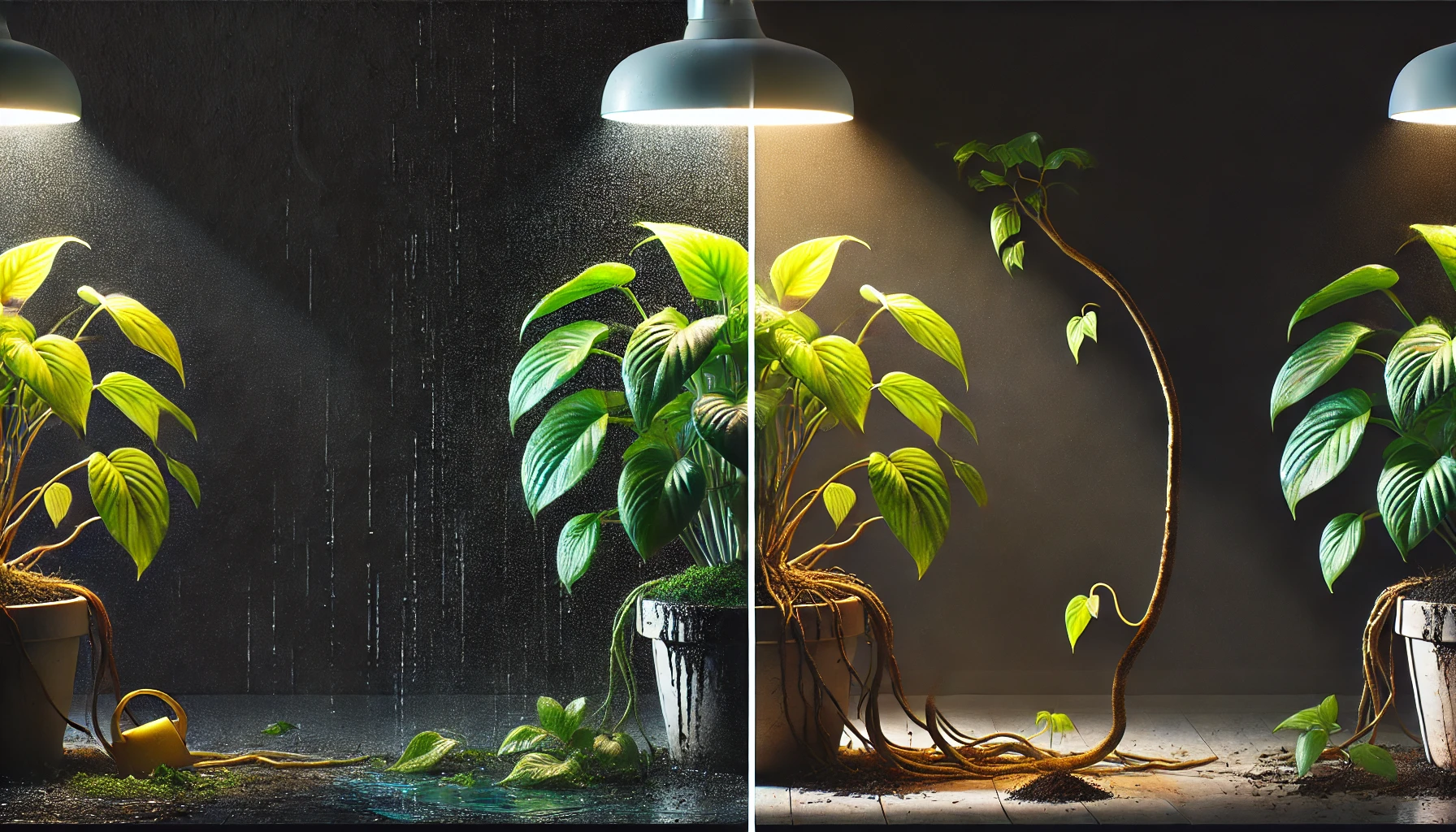
Over-Fertilizing
- Why It’s a Problem: These plants grow slowly in low-light conditions, so they don’t need frequent feeding. Too much fertilizer can cause weak, spindly growth or salt buildup in the soil.
- How to Avoid It: Fertilize sparingly, using a diluted, balanced fertilizer once a month during the growing season (spring and summer).
Not Cleaning the Leaves Regularly
- Why It’s a Problem: Dust and dirt on leaves block light absorption, leading to poor photosynthesis and growth.
- How to Avoid It: Clean leaves gently with a damp cloth every few weeks to remove dust and keep your plants healthy.
Lack of Pest Control
- Why It’s a Problem: Shade-tolerant plants are still susceptible to pests like spider mites, aphids, and fungus gnats. Ignoring pest issues can lead to damage and disease.
- How to Avoid It: Regularly inspect your plants for pests, especially on the undersides of leaves. Use neem oil or insecticidal soap for treatment if needed.
By avoiding these common mistakes, your shade-tolerant indoor plant varieties will thrive and remain healthy. Keep their environment stable, avoid overcare, and watch them flourish in even the darkest corners of your home!
Choosing the right shade-tolerant indoor plant varieties can transform any low-light space into a vibrant, calming environment. These plants not only thrive in dim conditions but also require minimal care, making them perfect for beginners and busy plant owners alike. By understanding their unique needs—such as proper watering, humidity, and light exposure—you can ensure your plants flourish and enhance your indoor space. Avoid common mistakes, follow the essential care tips, and soon you’ll be enjoying lush greenery, even in the darkest corners of your home. Happy planting!
Frequently Asked Questions (FAQ)
What are the best shade-tolerant indoor plants?
Some of the best shade-tolerant indoor plants include snake plant, pothos, ZZ plant, peace lily, Chinese evergreen, cast iron plant, and ferns.
Can shade-tolerant plants survive in complete darkness?
No, all plants need some level of light to thrive. Shade-tolerant plants can survive in low-light conditions but still require indirect or artificial light.
How often should I water shade-tolerant plants?
Most shade-tolerant plants prefer to dry out between waterings. Generally, watering once every 1–2 weeks is sufficient, but this depends on humidity and temperature.
Do shade-tolerant plants need fertilizer?
Yes, but in moderation. Use a balanced liquid fertilizer every 4–6 weeks during the growing season (spring and summer) to promote healthy growth.
Are shade-tolerant plants safe for pets?
Not all shade-tolerant plants are pet-friendly. While spider plants and calatheas are non-toxic, others like peace lilies and pothos are toxic to pets.
What are the easiest shade-tolerant plants to care for?
The snake plant, ZZ plant, and cast iron plant require minimal care and can thrive in low light with infrequent watering.
Can I grow flowering plants in the shade indoors?
Yes, some low-light flowering plants, such as peace lilies and anthuriums, can bloom in indirect light conditions.
What is the best soil mix for shade-tolerant plants?
Lorem ipsum dolor sit amet, consectetur adipiscing elit. Ut elit tellus, luctus nec ullamcorper mattis, pulvinar dapibus leo.
How can I improve lighting for shade-tolerant plants indoors?
Lorem ipsum dolor sit amet, consectetur adipiscing elit. Ut elit tellus, luctus nec ullamcorper mattis, pulvinar dapibus leo.
Do shade-tolerant plants help purify indoor air?
Yes! Many shade-tolerant plants, such as the snake plant, peace lily, and pothos, can help remove toxins and improve indoor air quality.
